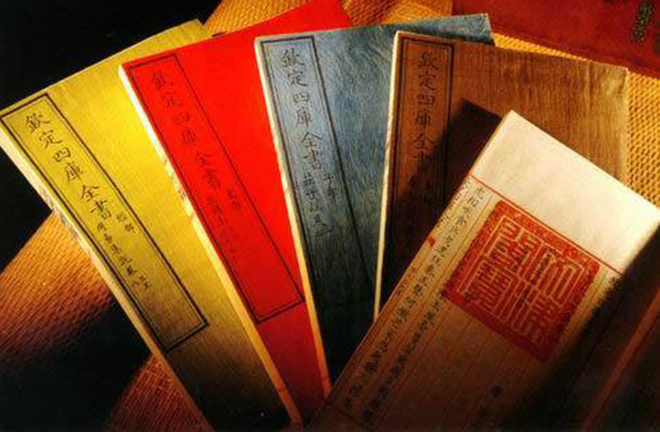Overseas distribution of cultural classics fosters Chinese civilization

The Complete Collections of Chinese Classics (siku quanhu) compiled in the Qing Dynasty Photo: FILE
Chinese cultural classics are the typical embodiment of Chinese culture. Before the founding of the New China, Westerners' understanding of Chinese cultural classics primarily depended on research by overseas Sinologists. The representative figures were Herbert Giles, Arthur Waley, David Hawks, Ezra Pound and so on. Chinese scholars only started promoting the overseas distribution of classics about 100 years ago. Since the reform and opening up, with the continuous strengthening of translations of Chinese classics, Chinese scholars have promoted the international distribution of literature. Today, with the development of the "Belt and Road" and China's growing international influence, distributing Chinese classics overseas and introducing refined Chinese civilization is of great significance to enhance the country's cultural soft power.
Research shows that the current spread of Chinese classics overseas is unbalanced. Taking the Four Great Classical Novels as an example, the most influential work among them is Journey to the West, and the least influential one is Water Margin. Foreign readers are more familiar with the translation of A Dream of Red Mansions by the English Sinologist Hawkes, and fewer people have read the version by the Chinese translator Yang Xianyi. There is also uneven regional distribution of cultural works. Currently, the Four Great Classical Novels are most influential in East Asia and Southeast Asia. Japanese' readership of the Romance of the Three Kingdoms is as popular as in China, and a large number of films, plays and adaptations of the work have been produced.
It is not difficult to find that scholars engaged in translation often need to take into account the cultural elements, tastes and interests of target language speaking nationalities. The reason why the Journey to the West is the most extensively spread in foreign countries, with the most far-reaching influence, is that it advocates the spirit of heroism, adventure and praises virtue while punishing vice.
Nevertheless, although the TV series "Journey to the West" filmed by US producers takes the original Chinese work as the blueprint of script, its cultural messaging is built on Western thought. The hero image portrayal is closer to the classic hero image in American films. In works such as A Dream of Red Mansions, which are rich in Chinese traditional cultural elements, obstacles in Western readers' understanding and acceptance still remain. Therefore, the overseas distribution of Chinese cultural classics still has a long way to go.
First, it is necessary to effectively integrate globalization efforts and national differentiation. As China's international status continuously improves in the process of economic globalization, the world increasingly comes to know the cultural charm of Chinese classics. Culture is the foundation of civilization and civilization is the height of culture. Culture is distinct from region and nation while civilization is universal, which can transcend the boundaries of country and nation. We should realize that the independence of Chinese and Western cultures makes them complementary. The widespread appeal of Journey to the West makes us realize that we should continue to dig deeply into universality of our classics, which both reflect national interests and are popular with Western readers. The national loyalty and resistance to oppression reflected in the Water Margin and "virtue comes first" ideology embodied in the Romance of the Three Kingdoms are the best examples. Classics themselves are a huge cultural symbol, which require us to constantly seek the inherent commonality between cultures and promote the integration of different cultures.
Next, we should focus on the training of professional translators. Chinese cultural classics are currently faced with a shortage of professional translators, limited target languages, and other predicaments. Current translator cultivation systems are mainly based on English language education, but the sophistication required for translation of Chinese cultural classics requires professional translators who have both a deep understanding of Chinese culture and of the cultural history of target-language countries.
Finally, traditional media and new media should be combined when recounting the stories of Chinese classics. By means of vivid story telling with both illustrations and texts, the classics can be rendered for foreign readers in an easily understandable way and become more impactful for young people.
Ji Xuan is from the School of Foreign Languages and Cultures at Nanjing Normal University.
Edited by BAI LE
